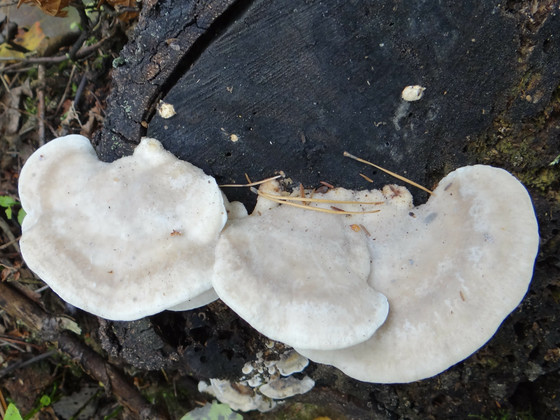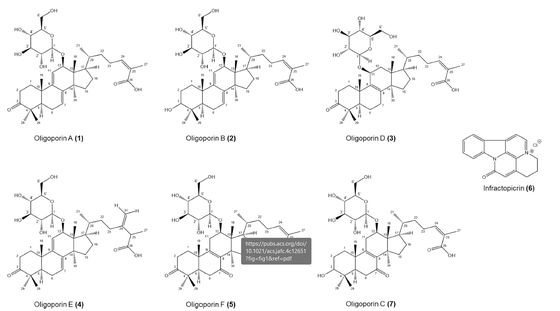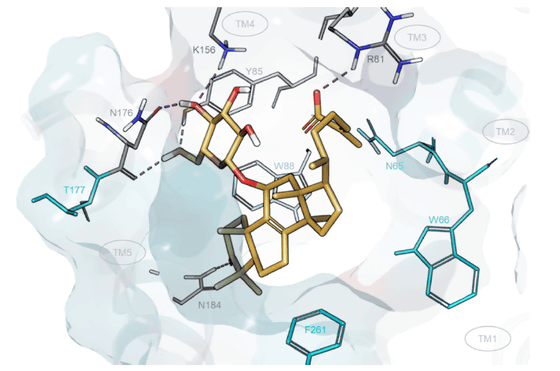The most bitter substance in human history discovered in mushrooms

A research team from the Technical University of Munich in Germany has published a paper announcing the discovery of unknown bitter substances from mushrooms known for their bitterness. The research team reports that one of the discovered bitter substances has the strongest bitterness ever discovered.
Taste-Guided Isolation of Bitter Compounds from the Mushroom Amaropostia stiptica Activates a Subset of Human Bitter Taste Receptors | Journal of Agricultural and Food Chemistry
This Fungus Contains The Most Bitter Substance Known to Humankind : ScienceAlert
https://www.sciencealert.com/this-fungus-contains-the-most-bitter-substance-known-to-humankind
Bitterness is one of the five basic tastes, and it is known that the brain feels bitterness when about 25 types of bitter taste receptors (TASR2) in the tongue, soft palate, trachea, etc. detect certain substances. There are more than 1,000 types of compounds that act on these bitter taste receptors as 'bitterness sources,' but most of them are extracted from seed plants, and only a few compounds derived from fungi or animals have been identified.
Seed plants appeared on Earth about 200 million years ago, making them a relatively recent group of plants in the long evolutionary history of living organisms. However, it is said that vertebrates acquired TASR2 about 500 million years ago , and it is unknown how organisms before the appearance of seed plants developed the ability to react to bitter tastes. Therefore, the research team focused on bitter compounds contained in fungi, including mushrooms, which have existed since ancient times.
The subject of this study was a mushroom called Amaropostia stiptica . Amaropostia stiptica is also known as the 'Bitter Bracket' and is known to be very bitter, although it is not edible. However, it was unknown what specific compound was responsible for the bitterness.

by Jerzy Opioła
The research team succeeded in isolating the new bitter substances oligoporin D, oligoporin E, and oligoporin F in addition to the known bitter substances oligoporin A and oligoporin B from Amaropostia stiptica collected in Bavaria, Germany in October 2020. When these compounds were screened with human bitter taste receptors, it was found that all compounds activated at least one receptor.

In particular, it was found that oligoporin D was able to activate TASR2 even at an ultra-low concentration of 0.1 μM. This means that bitterness can be sensed even if only 0.158 g of oligoporin D is administered to 2.5 million liters of water, the equivalent of a sports pool. The research team evaluates oligoporin D as the most powerful bitter substance ever found.

For humans, bitterness is a signal that allows us to recognize certain molecules contained in food, and our aversion to bitter foods and drinks is said to be one of our innate rejection reactions. However, bitter things are not always poisonous, and as the saying goes, 'good medicine tastes bitter,' some bitter foods are actually good for your health. On the other hand, there are also foods that are not bitter but are highly poisonous.
For example, Amanita phalloides , known for its poison, can cause diarrhea, vomiting, hallucinations, and convulsions when eaten. However, its main toxic components, ibotenic acid and muscimol , are known to be strong umami components. Therefore, although Amanita phalloides can cause poisoning when eaten, it is known to have a very good taste . On the other hand, Amaropostia stiptica, which contains the most bitter substances, is bitter and inedible, but its toxicity has not been confirmed at the time of writing.
'Humans are not the primary predators of mushrooms. Many other animals also consume mushrooms, and their receptors may be better able to distinguish between toxic and non-toxic mushrooms,' the team said. They argued that further research is needed to understand why animals have evolved to taste bitterness.
Related Posts:







